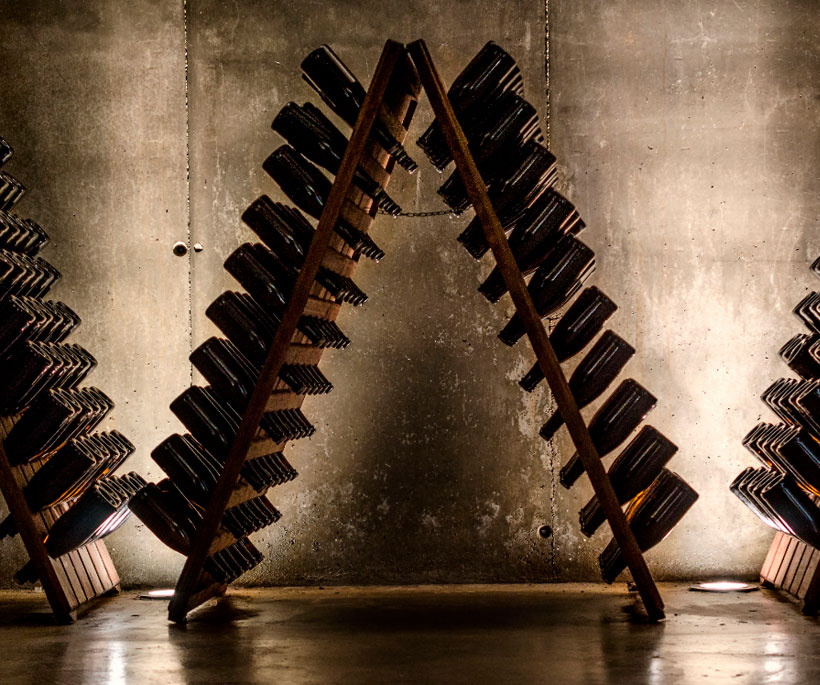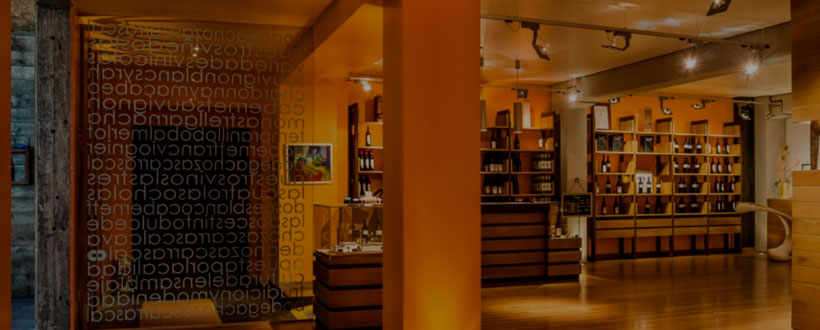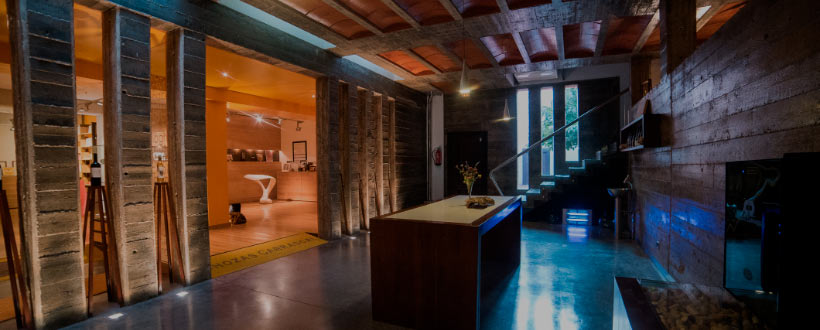ENVIRONMENT AND BIODIVERSITY
All the wines we produce have a common link, their purely Mediterranean character, but with two additional variables that tweak and define the grapes that we get every year: the altitude of our vineyard, which range from 750 to 840 metres, one of the highest in the whole community, and the proximity to the Sierra Moreno. The local fauna and flora at Chozas Carrascal also bring into play their influence, attracting natural predators that help us minimize the work in the vineyard. The insects and the plants on the estate work with us in the care of the vines allowing them to enjoy some independence.

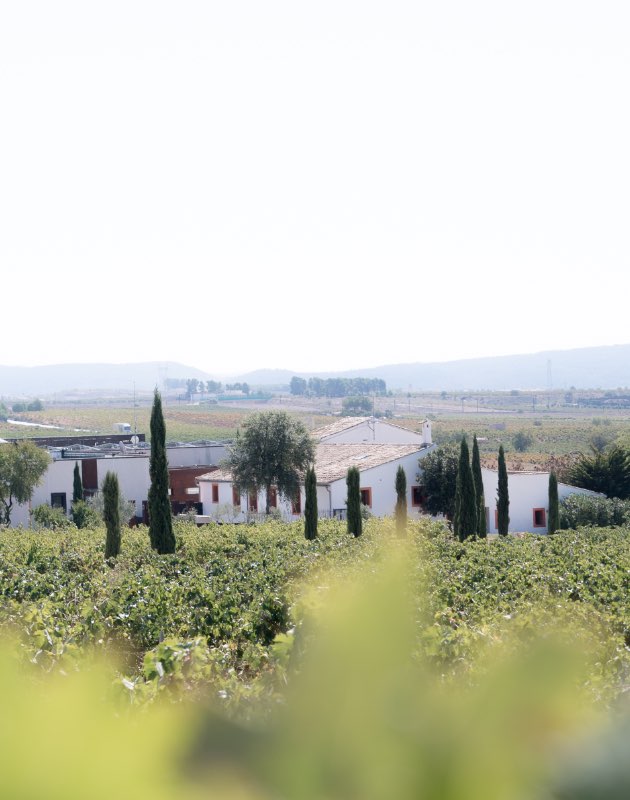
THE LOCALITY
Is one of the coldest in the region for its height and its proximity to the Juan Navarro mountains, with their Northerly prevailing winds. Being a slightly rising, flat estate there are no major barriers that prevent the direct entry of this cold North wind. The boundaries to the North, East and West of the site are taller hills, in the form of independent elongated plateaus. To the South, the boundary is the ‘Vereda Real’ and the beginning of the central plateau of Requena.
CLIMATOLOGY
The climate of the area is Mediterranean-Continental. The average annual rainfall is low, hovering around 350-400 litres per year, with much of these concentrated in September.
The sunshine is very intense, with almost 3.000 hours per year, with a marked thermal difference between day and night in the months of September and October, when the grapes are ripening. The climatic conditions of the vineyard differ from those of the rest of the region and the adjoining areas in the high wind gusts and lower minimum temperatures due to the influence of the North wind, but higher minimum temperatures thanks to the protection afforded by natural barriers to the East and West.
The extension of the Sierra Juan Navarro to the Southeast slows down much of the clouds that come from the Mediterranean loaded with water; as a result, the rainfall at Chozas Carrascal is lower than in other areas of the region
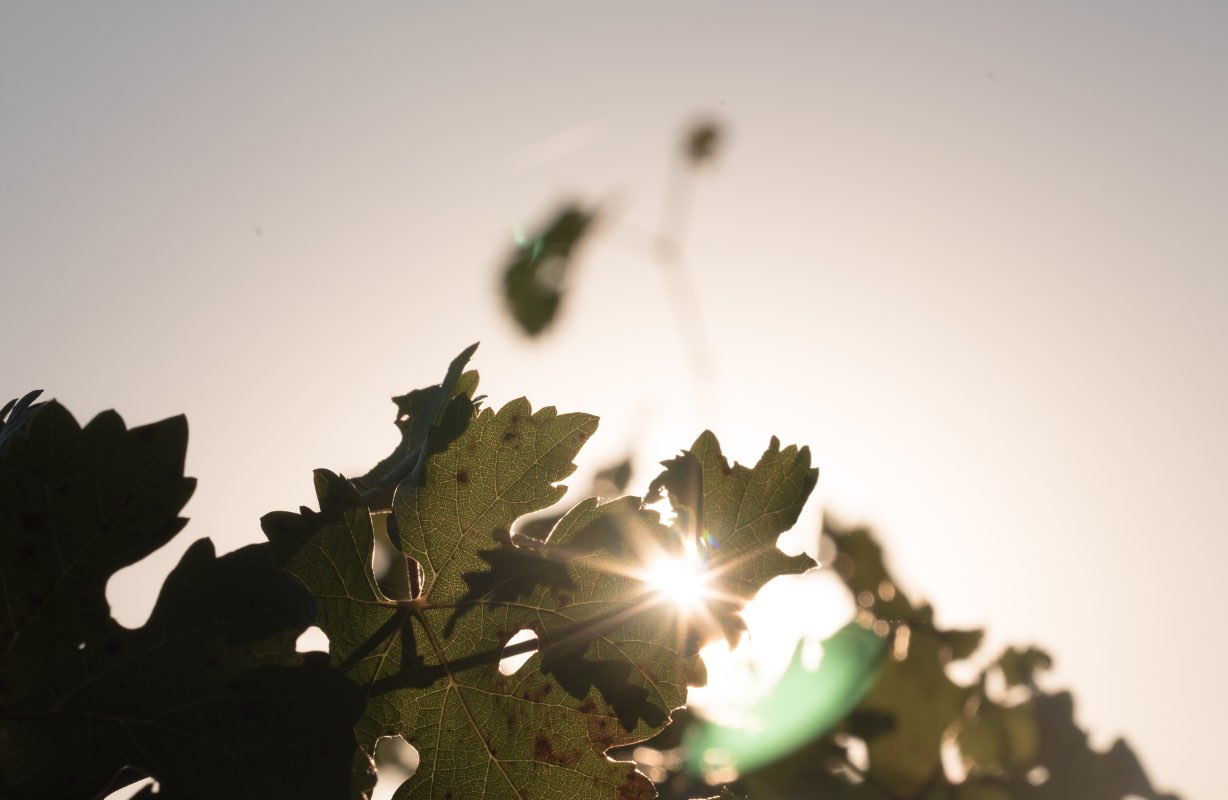
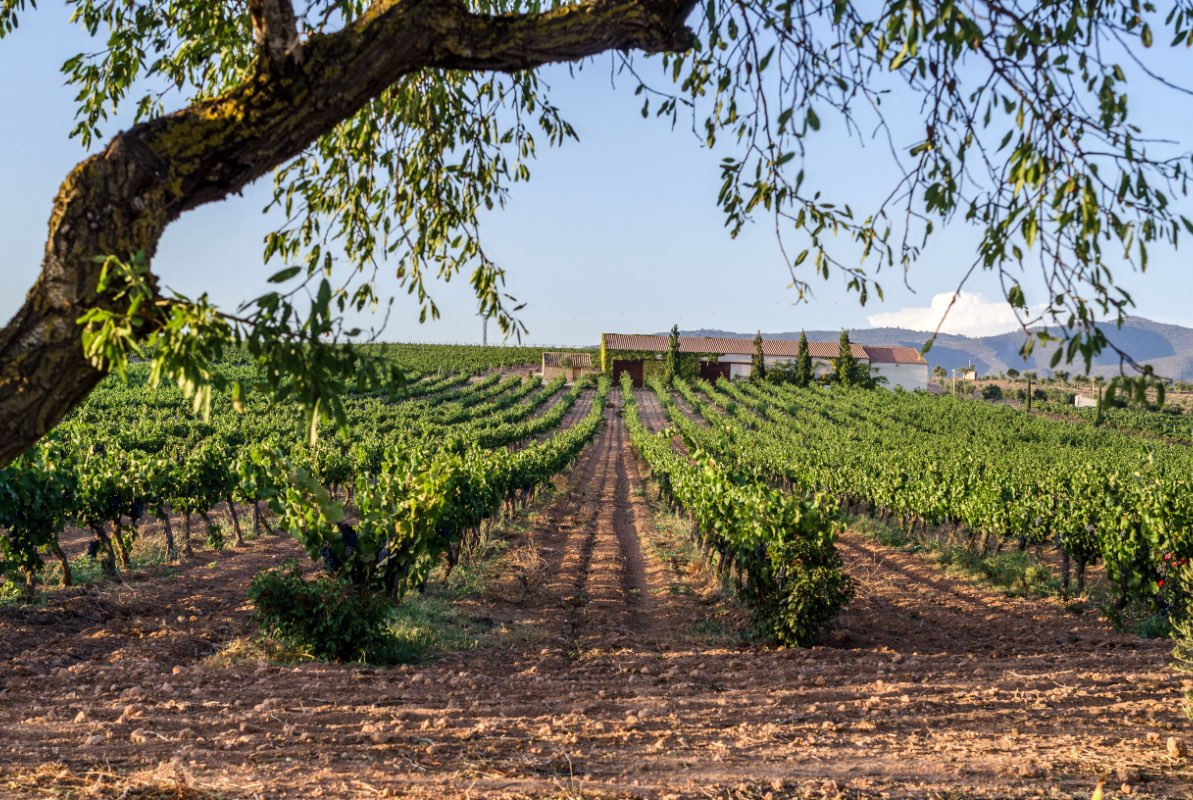
MEDITERRANEAN CULTIVATION
Just as important as our vineyards and soils, is the biodiversity existing in our estate that is inevitably influenced by the Mediterranean character of the climate. From the carrascas (pin oaks) that grow on the estate and in its surroundings, to aromatic herbs such as thyme or lavender or the plants with flowering cycles that attract insects, all of them are just as important to us as the vineyard itself because their influence is directly evident in our wines.
THE PLOTS
The farm has a South, Southeast orientation to favour the grapes, which mainly have long ripening cycles. The high altitude where we are, makes ripening slower, which causes our harvests to be delayed by up to 15 days from the average in the region. It is a factor that imposes a unique freshness in the wines and therefore one of the reasons why our wines improve with bottle ageing.
At Chozas Carrascal we have fourteen different plots of vines and all are the beating heart of the winery. Each of them enjoys a unique personality, a singularity and style.
- 1. Real
- 2. Dehesa
- 3. La loma
- 4. La Caseta de Emilio
- 5. La Vaguada
- 6. La Pinada
- 7. Aljibe
- 8. La Carrasca
- 9. Casilla de las dos puertas
- 10. La Trufera
- 11. La Alcaldesa
- 12. El Pedregal
- 13. El Olivar
- 14. Pico del Águila / El Mirador
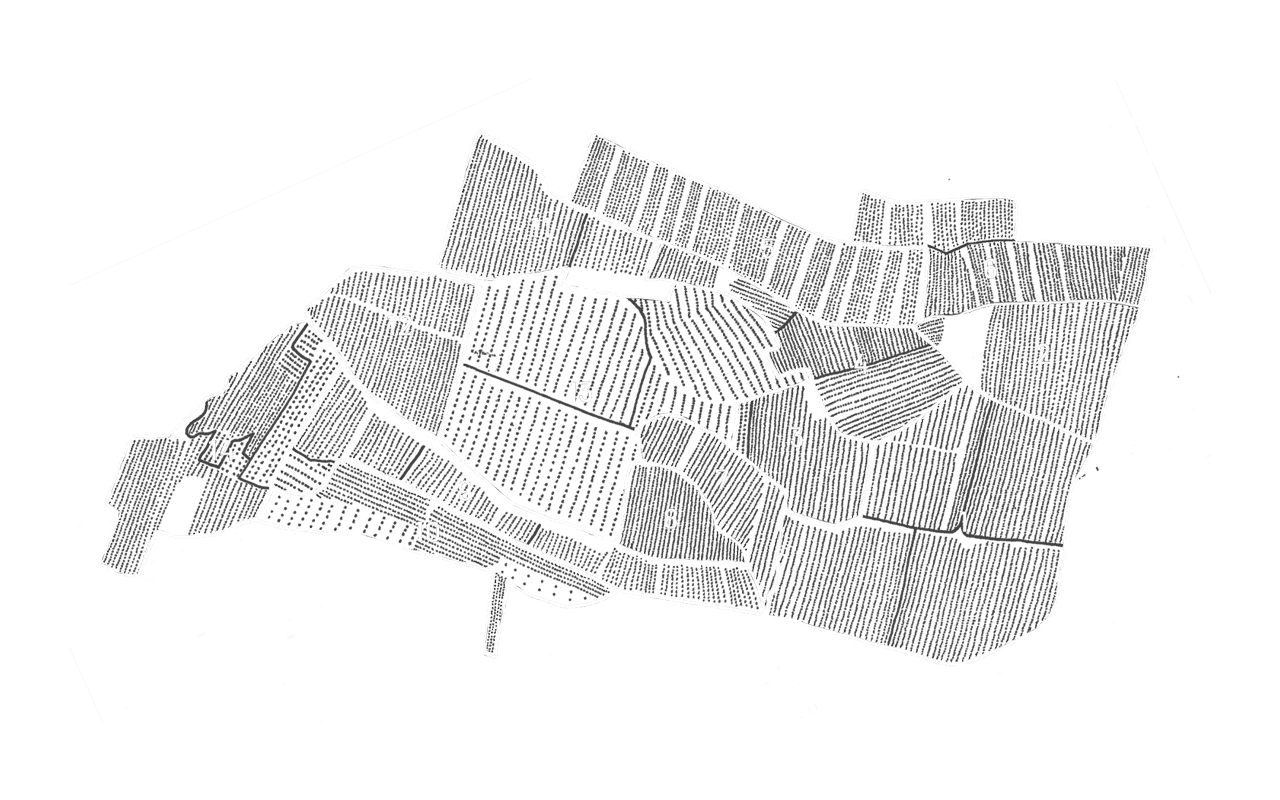

OUR VARIETALS
From the best grapes to the best wines.

Bobal
It is the most representative and ancient native variety of our production area, first written about in the fifteenth century. In it we find one of the best Mediterranean grapes. It requires a lot of care and low yields to show its full potential. Its budding and mid-late maturation is made for this dominating Mediterranean climate, with the peculiarity that the freshness of our surroundings makes it more approachable and singular. We have several plots of Bobal on the estate, the first plantings were made in 1928, being the oldest plots we have.

Grenache
Although it is fashionable nowadays, this variety has not always enjoyed a great reputation. Cultivated all over the world, but especially in Spain, where it originated, its presence in the vineyards of Chozas Carrascal is due to its versatility in showing its true identity depending on the soil where it is planted and the time of harvest. For this reason it is the variety that has the most uses in the winery. Its cycle of budding, flowering and maturation is ideal for our environment and its capacity for expression has not yet reached its peak, so we work with it tirelessly in order to get the best out of it. The Grenache vines were planted in 1992, 1996 and 2000.

Cabernet Franc
Even though at the time we were labelled as crazy for daring to grow this variety in Requena, the truth is that over time it has brought us great joy. Its excellent results in areas of cultivation subject to maritime influence, such as Anjou in the Loire Valley, and its contribution to the complex blends in the Rhone, encouraged us to count on it. It is an elegant variety, with a rich acidity and offering rich herbal notes accompanied by a crispy tannin if treated as it deserves, i.e. not subjecting it to excessive maturation. Its budding and ripening earlier than Cabernet Sauvignon has served to make its acclimatization to the ‘terroir’ exceptional. This variety has been with us from the beginning, and was planted in 1992.

Syrah
A captivating variety for its big fruity expressiveness and because it also fits perfectly when paired with varieties such as Grenache and Monastrell. Although its origin is far from our homeland, its growth and adaptation to the vineyard has been incredible. We are very satisfied by everything this grape brings to the wines. These vines were planted in 1992 and have since been increasing their expressiveness and improving their performance.

Cabernet Sauvignon
This variety needs little introduction as it is so widespread all over the world, it is a noble variety and as such has great virtues both on the nose and in the mouth. In our first harvests, its contribution was pre-eminent, however over the years other varieties have advanced more strongly due to their spectacular development in the vineyard. What we like most about this variety is its complexity and its structure. It is a variety that, if well-treated, brings delicacy to the blended wine.

Merlot
This is the earliest maturing red variety of the vineyard in hot years. This variety, of early sprouting and medium maturation, requires a fast and precise harvest so that the less friendly traits do not emerge. Its contribution of fruit to the assembled wine is remarkable.

Tempranillo
Probably the best-known variety of the Spanish vineyard. It provides very fresh and fruity wines but has little ageing capacity due to our soils and climate, which is why it is becoming less and less used in our blended wines.

Monastrell
It is together with Bobal one of the most representative varieties of our environment, it is not surprising that it is one of the most important in the region. Its character is special, we could say that it is an intense and highly-strung variety because of its high amount of tannins and polyphenols and for its good acidity. They were planted in 1992 and occupy a preferential place in the wines for blending, providing and accentuating the Mediterranean character that our wines always have.

Chardonnay
Always a challenge for our family. It has a very marked varietal character. Its presence is clearly seen in the Cavas and in the white Las Tres. We have 6.5 hectares of this variety, located in different plots in the vineyard from which we get different organoleptic profiles. In addition to being present in our wines Las Dos Ces and Las Tres, it is an undisputed protagonist in our Cavas and we believe that it is to a large extent responsible for the high acceptance that they have had in the specialized press inside and outside our borders. In addition to confirming its well-known oenological qualities, in recent years we have been trying to better understand its performance over time, and for this we have vinified and aged it in various containers such as cement, terracotta, concrete eggs or barrels…. Some of the data we have now obtained is promising.

Sauvignon Blanc
Arrived at our estate in 1992 firstly to experiment with it and finally to develop freely on just under 3.5 hectares. For us the most striking thing about this grape is its aromatic richness and its contribution of freshness and acidity. This French varietal is largely responsible for our white wine Las Tres.

Macabeo
A classic for the elaboration of cavas. In 1992 we decided to plant it because without it we would not be making cavas with typicity. This small and shy variety is largely responsible for the identity profile of the vast majority of wines with the seal of DO Cava, although it likes to hide its highlights. Its strengths: acidity, freshness and subtle citrus and green apple aromas.
SUSTAINABILITY
In a family winery such as Chozas Carrascal we are convinced of the need to make a major change in the way the land works. Not only do we want our grapes to improve over time, but we also want these unique plots to go from generation to generation and our contribution to the countryside to have the least intervention as possible. The term ecological is more than just a label on wine, it implies a way of understanding life. Since 1992 we have been trying to improve our understanding of our vineyards and their environment and we gradually apply techniques more respectful to our land.
In 2002 we decided to stop using herbicides and let some of the work be done by the swallows who visit us and to help the vines with weeds through a ploughing between rows of vines, if the weather conditions require it. In 2004 we incorporated organic fertilizer using sheep manure. Through ecological cultivation we have managed to achieve soils which are not overly fertile which would have made our plants excessively vigorous and therefore offer greater production and lower quality.
Just as important as the soil are the vines and the ecosystem around us. Continuing to learn from nature is our goal, only then can we bottle a wine which expresses our ‘terroir’ and vintage.

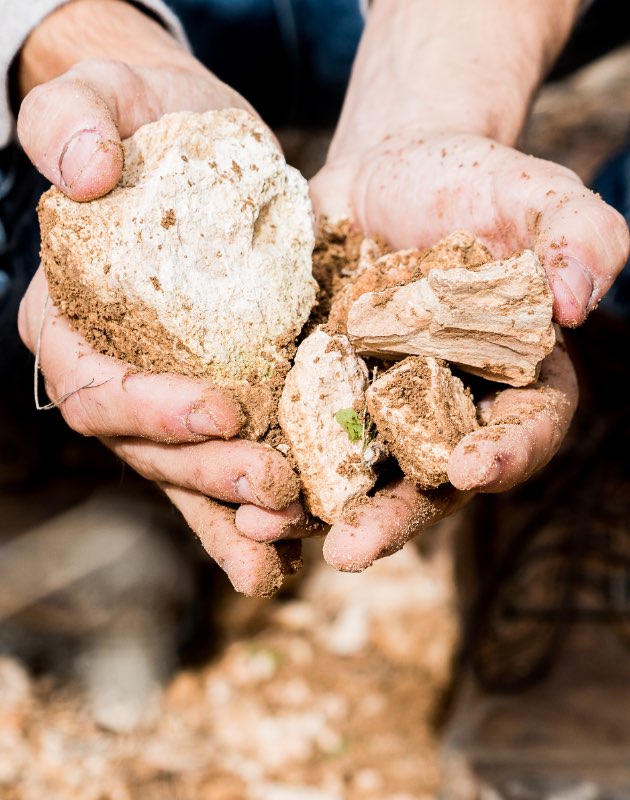
CONTACT
Fill out the form and we will contact you.
WINES AND CAVAS BY CHOZAS CARRASCAL
The wisdom of the soils
in every bottle.
Follow us


